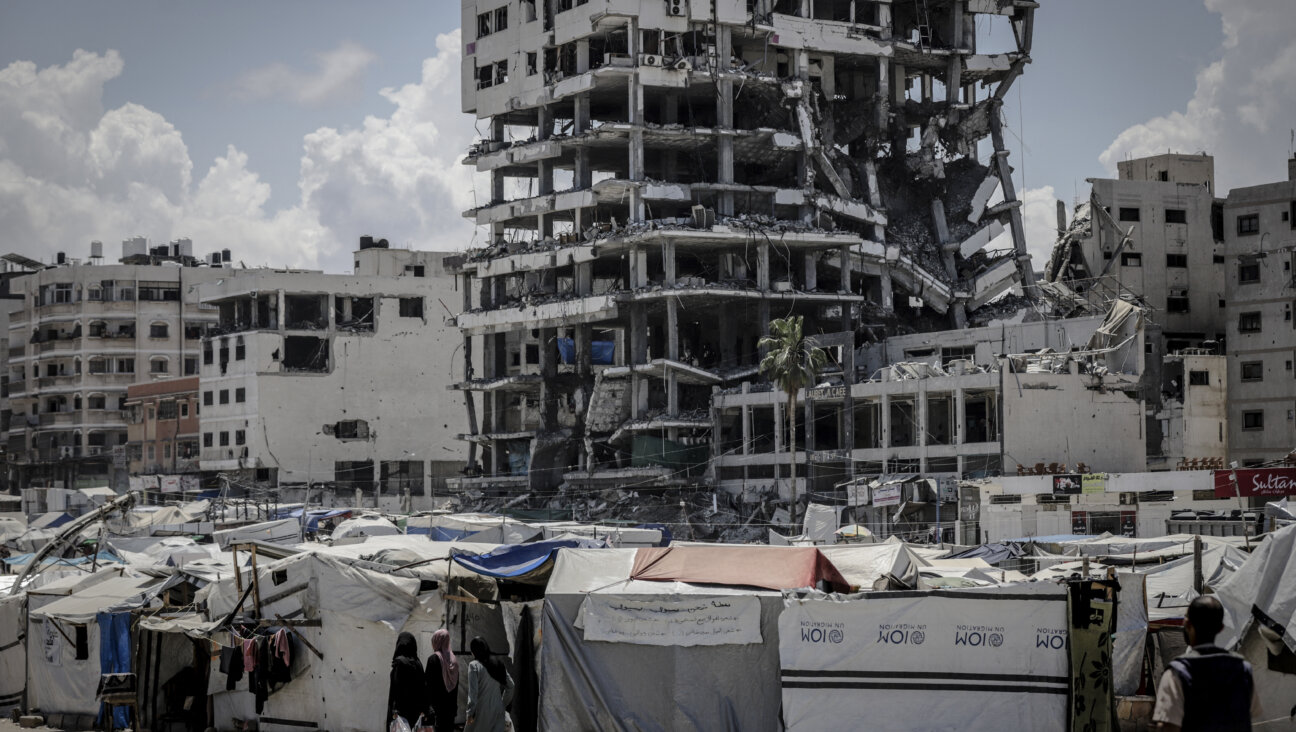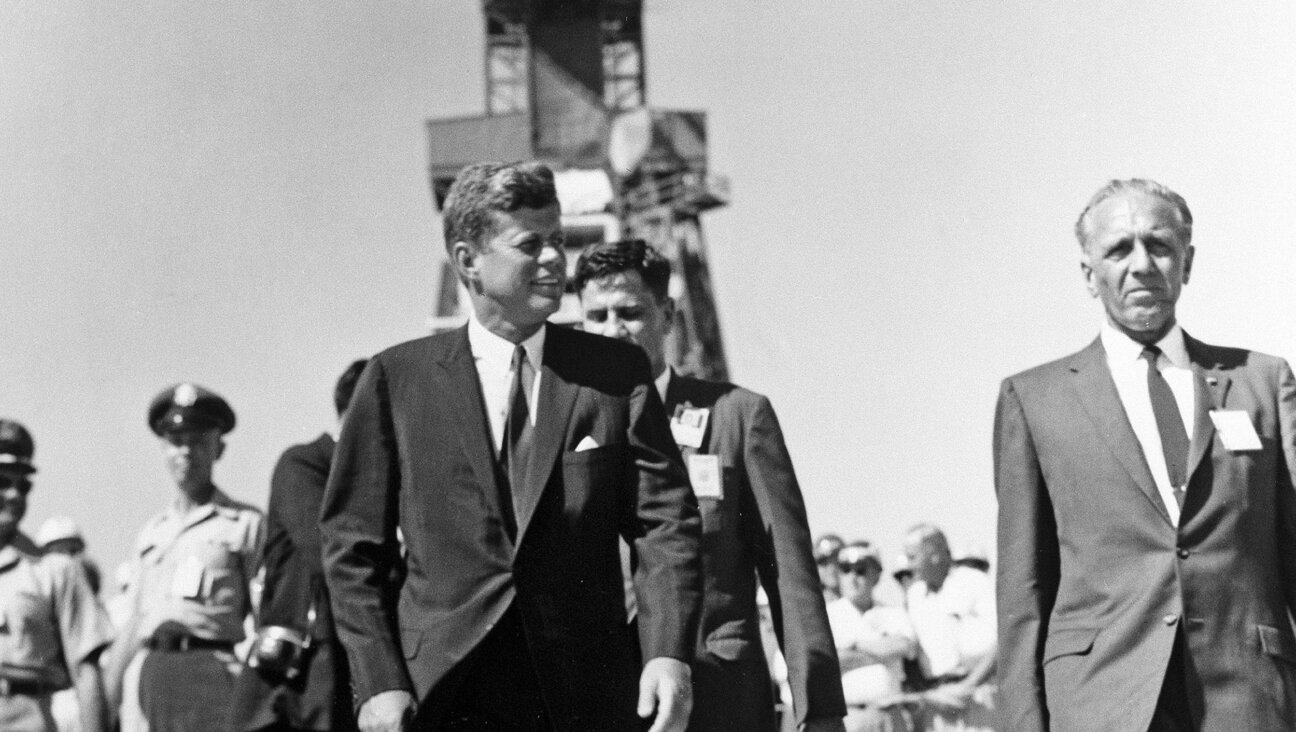Mideast Q&(No)A
To what question is “helicopter gunships” the answer?
It is virtually impossible to disengage the emotions while the carnage continues. One need not join or even sympathize with last week’s Jerusalem crowd shouting “Death to the Arabs!” as they viewed the bombed-out bus to feel disgust toward the Palestinians and utter cynicism toward the peace process.
But the key word in that last sentence is “feel.” Sooner or later — and much better sooner than later — it is well to put the feelings aside and to start thinking. One might ask: So late in the day, what is there left to think about? Yet the opening question is obvious: How do we get beyond this dreadful place?
One answer: There are moderate Palestinians, but it is Hamas that has the power and the initiative. Accordingly, destroy Hamas. That is, in fact, the campaign announced in recent days by the Israeli government. So long as the Palestinian Authority is unwilling or unable to do the job — the job it promises to do, and immediately, under the terms of the “road map” — then Israel itself will do it, will do it because not to do it is to experience still more bus bombings and the like.
Alright, then, destroy Hamas, which, not so incidentally, has vowed to destroy Israel.
In order to destroy Hamas, the Israeli military has chosen to attack its leaders with missile-firing helicopters. It locates an automobile carrying a terrorist — a “militant,” according to the preferred locution of the media — and launches a missile.
Here is where the thinking must begin. Do you launch a missile if you know there are innocent passengers in the car you’ve targeted? You might argue in light of what’s been going on that anyone dumb enough to be riding around in a car with a Hamas leader has put himself at risk, and if the Israeli army was to refrain from targeting any Hamas leader traveling with “innocents,” why then every Hamas leader would always travel with an appropriately innocent companion.
Good, we are making progress, narrowing the options: the presence of innocents is no reason to hold your fire. But what if the innocent passenger is a 2-year old child — say, for example, the daughter of the Hamas leader? This week, the Israeli army apologized for just such an incident, claiming it had not known there were family members in the car with the Hamas leader. So, apparently, children are off-limits. But at what age does that flip? When they are 10? Or 13? Or 18, the age of the most recent suicide bomber? What are the appropriate guidelines here?
It gets harder: What about bystanders? In its raids of the last week, the Israeli army has wounded as many as 30 bystanders at a time. You’d presumably not fire your missile if the car were entirely surrounded by people, such that hundreds might be wounded by your missile. Well, then, how many people is too many people? And again, does the equation change depending on what proportion of the nearby people — the likely “collateral damage” — are children?
All this is aside from the big question of whether such raids incite the kind of anger that produces still more suicide bombers, aside from the question of whether Hamas — or any terrorist organization — can really be destroyed from the air, aside from the question of timing, the question of whether within days of the public acceptance of the road map it is helpful to engage in this kind of action.
The “technical” questions about innocents, about numbers, and about children are immediately relevant; to say they are not is to suggest that the Israeli government and army may regard themselves as acting with no humane or legal constraint. Indeed, anyone who experiences even a touch of pride that the Israeli army felt obliged to apologize for the unintended killing of a 2-year old must face these uncomfortable “technical” questions. What makes them especially uncomfortable is that by and large, we know up front — meaning, of course, the Israeli army knows up front — that innocents will die and innocents will be wounded every time, or very nearly every time, a helicopter launches a missile.
The president of the United States had the temerity to suggest on June 12 that the helicopter attacks are not helpful to Israel’s security. Predictably, he was immediately dumped on by some American Jewish leaders and by the usual congressional grandstanders. “Double standards,” they groused. Double-standards to be sure — but do these critics believe that the helicopter attacks are helpful to Israel’s security? Do Israelis sleep more serenely at night because one more terrorist has been killed? Or are they awakened from their slumber by images of the disemboweled bystanders, the dead and wounded children?
To the kinds of questions raised here, there are no easy answers. But neither is searching out and destroying Hamas leaders from the air an easy answer to the question of what ought be done by Israel today. Fully 67% of the Israeli people, according to the latest poll, oppose these attacks, preferring to give the P.A. time to put its house in order and to deal with Hamas itself. They may not know the answer to the big question, but they know the nasty question to which “helicopter gunships” is the answer: How can Israel work together with Hamas to ensure the early demise of the road map?
Leonard Fein’s most recent book is “Against the Dying of the Light: A Father’s Story of Love, Loss, and Hope” (Jewish Lights, 2001).
The Forward is free to read, but it isn’t free to produce

I hope you appreciated this article. Before you go, I’d like to ask you to please support the Forward.
Now more than ever, American Jews need independent news they can trust, with reporting driven by truth, not ideology. We serve you, not any ideological agenda.
At a time when other newsrooms are closing or cutting back, the Forward has removed its paywall and invested additional resources to report on the ground from Israel and around the U.S. on the impact of the war, rising antisemitism and polarized discourse.
This is a great time to support independent Jewish journalism you rely on. Make a gift today!
— Rachel Fishman Feddersen, Publisher and CEO
Support our mission to tell the Jewish story fully and fairly.
Most Popular
- 1

Fast Forward Ye debuts ‘Heil Hitler’ music video that includes a sample of a Hitler speech
- 2

Opinion It looks like Israel totally underestimated Trump
- 3

Culture Cardinals are Catholic, not Jewish — so why do they all wear yarmulkes?
- 4

Fast Forward Student suspended for ‘F— the Jews’ video defends himself on antisemitic podcast
In Case You Missed It
-

Fast Forward In first Sunday address, Pope Leo XIV calls for ceasefire in Gaza, release of hostages
-

Fast Forward Huckabee denies rift between Netanyahu and Trump as US actions in Middle East appear to leave out Israel
-

Fast Forward Federal security grants to synagogues are resuming after two-month Trump freeze
-

Fast Forward NY state budget weakens yeshiva oversight in blow to secular education advocates
-
Shop the Forward Store
100% of profits support our journalism
Republish This Story
Please read before republishing
We’re happy to make this story available to republish for free, unless it originated with JTA, Haaretz or another publication (as indicated on the article) and as long as you follow our guidelines.
You must comply with the following:
- Credit the Forward
- Retain our pixel
- Preserve our canonical link in Google search
- Add a noindex tag in Google search
See our full guidelines for more information, and this guide for detail about canonical URLs.
To republish, copy the HTML by clicking on the yellow button to the right; it includes our tracking pixel, all paragraph styles and hyperlinks, the author byline and credit to the Forward. It does not include images; to avoid copyright violations, you must add them manually, following our guidelines. Please email us at [email protected], subject line “republish,” with any questions or to let us know what stories you’re picking up.














